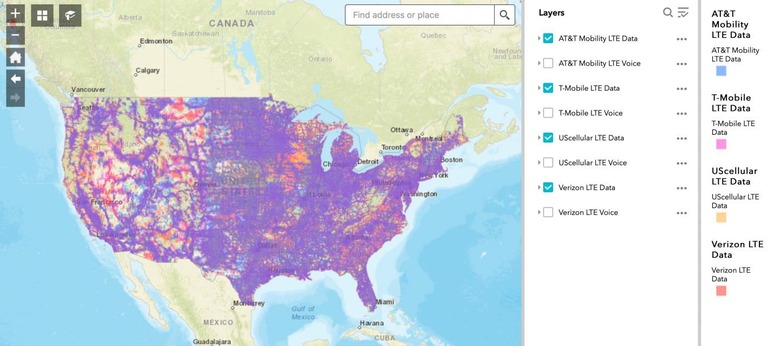This New FCC Mobile Broadband Map Compares Carrier Coverage Claims
Confusing cellphone coverage maps with misleading graphics and incomprehensible claims may be getting its comeuppance, with the FCC launching its first mobile broadband map to help consumers figure out what service they're actually likely to get. While cellular networks have been steadily improving, particularly with the arrival of 5G, it's still fair to say that carrier maps tend to be more promotional than educational.
That can lead to frustration, when a device you expected to get higher data speeds ends up struggling at little more than a crawl, or indeed failing to get online at all. It also makes comparing different carriers – like the relative coverage between AT&T, T-Mobile, and Verizon – much harder, since they all approach the maps slightly differently.
Now, the Federal Communications Commission is tackling that, with new mobile broadband maps of its own. Initially focused on 4G LTE coverage, for both voice and data, it's the first time the agency has taken such matters into its own hands. It also shows the importance of the Broadband DATA Act, which was passed into law in early 2020.
That required the FCC to collect and release granular broadband service data, across wired, fixed-wireless, satellite, and mobile broadband providers. The resulting maps would need to be regularly updated, the Act set out, and contain provisions for errors and issues in the core data to be challenged. Earlier this year, the FCC released a mobile app for people in the US to test and report their own data speed results.

"This map provides a preview of how the mobile data the FCC will collect under the standards set by the Broadband DATA Act will look when mapped," the FCC said in a statement today. "Never before have maps been created using these new, standardized mobile data specifications, which will improve the uniformity and consistency of broadband availability data collected by the FCC. This map will allow consumers to search by specific address to better understand whether they should be able to make and receive voice calls or use wireless data."
The first iteration is accurate as of May 15, 2021, and covers the networks of AT&T, T-Mobile, US Cellular, and Verizon. It's based on voluntarily-submitted data from the carriers themselves. Other carriers are able to submit their own results via the Broadband Data Task Force, the FCC says.
Of course, a single map is not sufficient to encapsulate mobile broadband performance. Not only are networks constantly shifting as new base stations and hardware are rolled out, the reality is that 5G is increasingly where carriers are investing. There's no public timeline for when 5G data speed results might be added, though the FCC is currently inviting comment on its plans for challenging carrier results and crowdsourcing more accurate coverage information.
